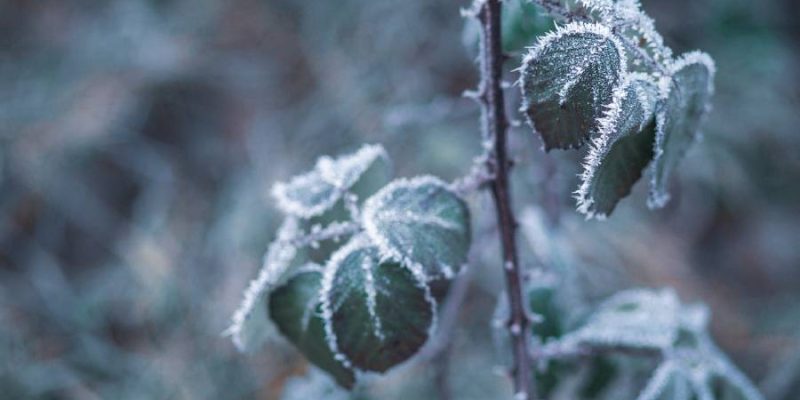As the winter weather approaches, it’s essential to take steps to protect your outdoor plants from the cold. Frost, freezing temperatures, wind, and other winter weather can all cause damage or stress to your plants, potentially leading to disease transmission or death.
As one of the leading agricultural netting suppliers in Asia, we have conducted research on producing corresponding climate screens for winter plant protection, as well as on how to protect vegetation during the winter. In this article, we will share some tips for protecting plants during the winter and hope they can help your garden survive the winter and thrive in the spring.
Which Plants Need Protection in Winter
There are many plants that may need protection in winter, depending on the specific climate and weather conditions in your area. Some plants that may need extra protection in winter include:

Some plants need to be protected in winter
- Tender annuals: These plants, which include flowers such as impatiens and petunias, are not winter hardy and will die in freezing temperatures.
- Tropical plants: Plants that are native to warmer climates, such as hibiscus and gardenias, may need extra protection in winter to prevent damage from frost or freezing temperatures.
- Plants in pots: Potted plants may be more vulnerable to freezing temperatures and drying out in winter, so they may need extra protection or regular watering.
- Delicate plants: Plants with delicate leaves or flowers, such as ferns and hostas, may be more prone to damage from frost or freezing temperatures.
- Citrus trees: Citrus trees, such as oranges and lemons, are not winter-hardy in many parts of the United States and may need extra protection in winter to prevent freezing.
It’s important to keep in mind that the specific plants that may need protection in winter will depend on the hardiness zone for your area and the local weather conditions. You can check the USDA Plant Hardiness Zone Map to determine which plants are most likely to thrive in your region.
What Risks Your Plants May Meet in Winter
To effectively protect your plants in winter, it’s important to understand the risks they face. Frost and freezing temperatures can cause physical damage to plants, particularly if they are tender or have delicate leaves or flowers. Wind can also cause damage, particularly to taller or more slender plants. Snow can be especially destructive, as the weight of the snow can cause physical damage to plants.
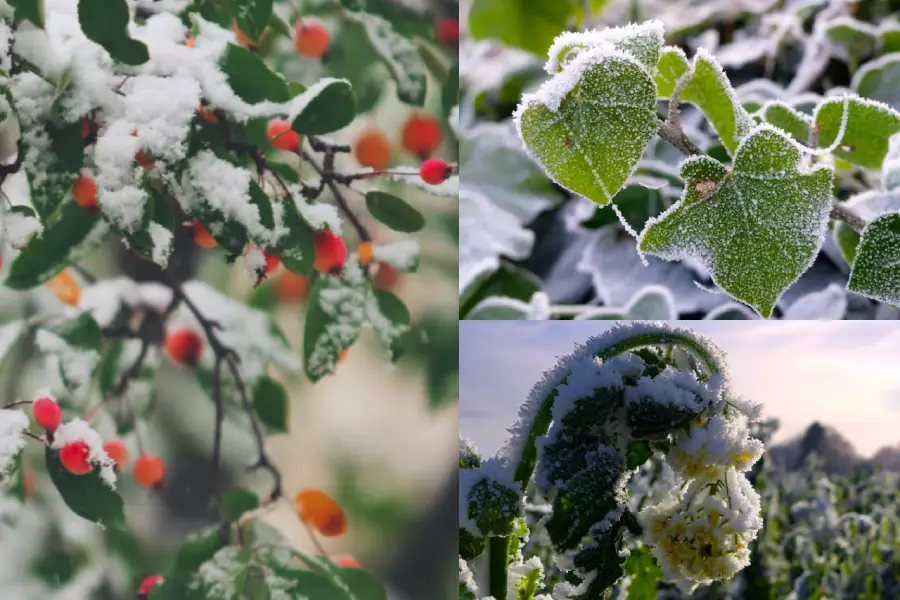
Cold weather damaged plants in winter
It’s important to keep in mind that the specific risks that your plants may face in winter will depend on the hardiness zone for your area and the local weather conditions. You can check the USDA Plant Hardiness Zone Map to determine which risks are most likely to impact your region.
How to Protect Your Plants in Winter – 10 Tips
Winter can be a challenging time for plants, with frost, snow, and freezing temperatures all posing a risk to their survival. However, with careful preparation and attention, you can help your plants withstand the winter season and flourish in the spring. Here are ten ways to safeguard your plants during the winter:
1. Utilize Mulch to Insulate the Soil
Utilizing mulch to insulate the soil can be an effective way to protect your plants during the winter months. Mulch is a layer of material that is spread over the surface of the soil, and it can be made from a variety of materials such as wood chips, bark, straw, leaves, grass clippings, or compost. When applied around the base of plants, mulch acts as a protective layer that helps to insulate the soil and keep it warm in the winter. This can be especially important for plants that are sensitive to cold temperatures, as it can help to prevent frost damage and keep the roots protected from temperature fluctuations.
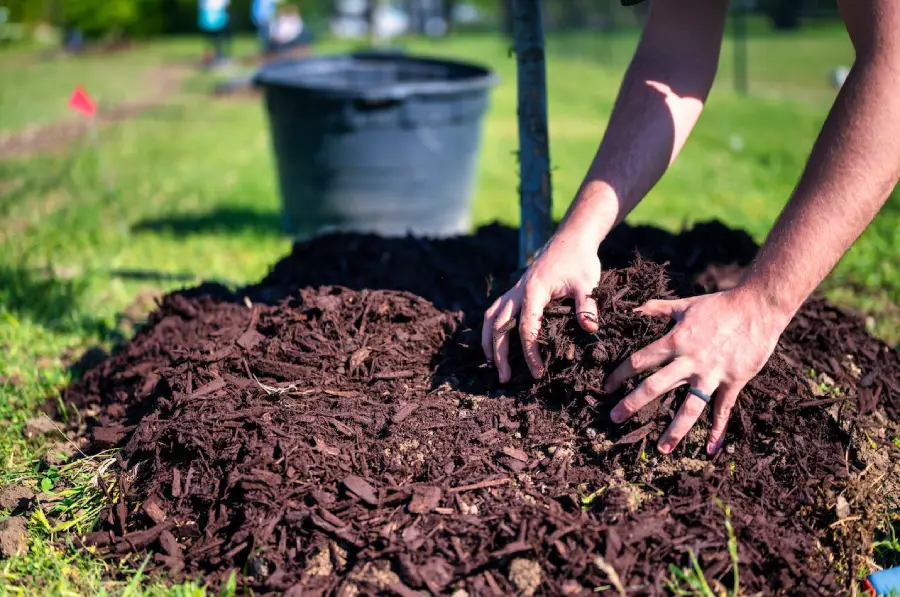
Mulch to Protect Plants in Winter
In addition to its insulating properties, mulch can also have other benefits for your plants. For example, it can help to suppress weeds, conserve moisture in the soil, and regulate soil temperature. Mulch can also add nutrients to the soil as it decomposes over time, providing your plants with a source of organic matter. To get the most out of mulch, it’s important to choose the right type for your plants and apply it properly. Be sure to keep mulch away from the base of plants that are prone to slug damage, as the moisture can create an ideal environment for slugs and harbor fungal diseases.
2. Establish Hardy Crops Early
Establishing hardy crops early is an important step in preparing your garden for the winter months. Hardy crops are plants that are able to withstand cold temperatures and adverse weather conditions, making them well-suited for growing in the fall. By planting hardy crops 6-12 weeks before the onset of cold weather, you give them time to grow and acclimate to the colder temperatures. This is especially important for young seedlings, which are particularly vulnerable to frost damage and death.
To ensure that your hardy crops have the best chance of surviving the winter, it’s important to give them the right conditions to grow in. This means planting them in a location that receives plenty of sunlight and providing them with well-draining soil that is rich in nutrients. Some hardy crops that you can plant in the fall include carrots, kale, broccoli, spinach, lettuce, chard, cilantro, cress, leeks, onions, radicchio, and frost-tolerant perennial plants. By taking the time to establish these crops early, you can help to ensure that your garden is ready to thrive in the spring.
3. Use a Cloche or Other Cover
Using a cloche or other cover can be an effective way to protect your plants from the harsh winter weather. A cloche is a small, bell-shaped greenhouse that is designed to be placed over individual plants to protect them from wind and frost. It is typically made of transparent material, such as plastic or glass, and can be used to create a warm, sheltered environment for your plants. By using a cloche, you can help to keep your plants warm and protected from the cold, allowing them to continue growing even in the face of freezing temperatures.
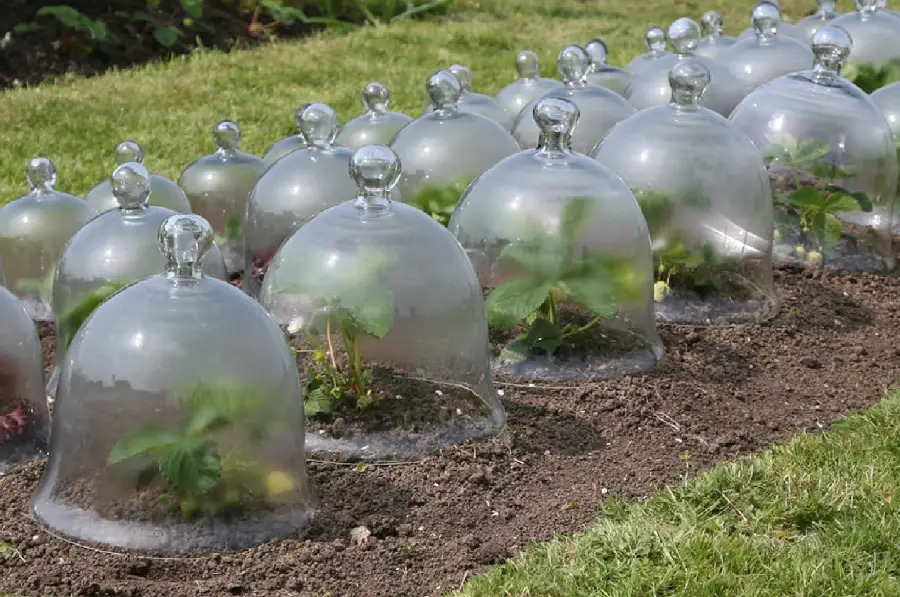
Use cloche to protect outdoor plants in winter
In addition to cloches, there are other types of covers that you can use to protect your plants in the winter. For example, you can use recycled bottles, clear glass jars, or other types of covers to provide your plants with extra protection. It’s important to keep in mind, however, that these covers should be removed when the temperature warms up to allow your plants to receive the sunlight and ventilation they need. By using a cloche or other cover, you can help to ensure that your plants survive the winter and are ready to thrive in the spring.
4. Move Potted Plants to a Sheltered Location
If you have potted plants that are vulnerable to frost, you may want to consider moving them to a sheltered location in the winter. This could be a porch, a greenhouse, or a sunny room in your home. If you can’t move the plants, you can also try placing them against walls, fences, or other plants to provide them with some protection from the cold wind.
5. Water Plants Deeply Before Ground Freezes
One of the key ways to protect your plants in winter is to ensure that they are well-hydrated before the ground freezes. When the soil is frozen, it can be difficult for plants to access water, leading to drought stress and death. To prevent this, make sure to water your plants deeply before the ground freezes. This will help to hydrate the plants and ensure that they have enough moisture to survive the winter months.
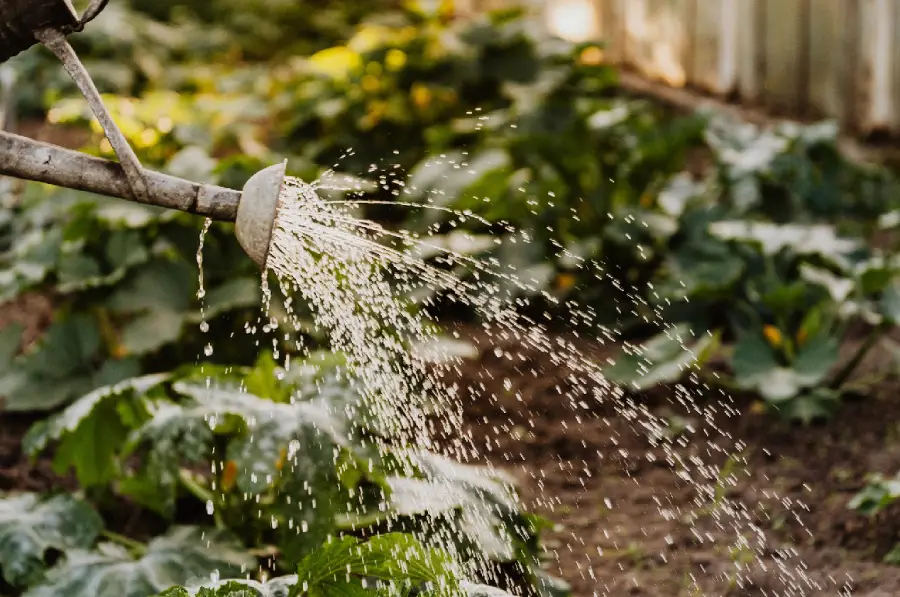
Water Plants Deeply Before Ground Freezes
It is essential to note that you should only water your plants if the soil is dry. Overwatering can be as harmful as underwatering, as it can lead to root rot and other issues. Use a moisture meter or stick your finger into the soil to determine if it is time to water. And you can follow this tutorial to water your plants in winter.
6. Gently Shaking Snow off Branches or Use a Broom
Heavy snowfall can be a significant threat to your plants in winter. The weight of the snow can cause branches to break or bend, resulting in damage or even death. To prevent this, it is crucial to remove the snow from your plants as soon as possible.
One way to do this is to gently shake the branches to loosen the snow. This can be done using your hands or a broom. Be sure to be gentle, as you don’t want to cause any additional damage to the plants. If the snow is too heavy, you may need to use a broom or snow shovel to remove it.
7. Use Thermal Screens or Blankets to Cover Plants
Using climate thermal screens or blankets to cover plants can be an effective way to protect them from extremely cold temperatures. Thermal screens are made of a material that is designed to retain heat and keep the cold out, making them ideal for protecting greenhouse plants during the winter months. They can be placed over individual plants or used to cover a group of plants and can help to create a warm, sheltered environment for your plants.

Climate Thermal Screen for Big Greenhouse
In addition to thermal screens, blankets can also be used to cover plants in the winter. These protective covers can help to keep the heat in and the cold out, providing your plants with the warmth they need to survive the winter. Like thermal screens, blankets should be removed when the temperature warms up to allow your plants to receive the sunlight and ventilation they need. By using thermal screens or blankets to cover your plants, you can help to ensure that they survive the winter and are ready to thrive in the spring.
8. Trim Dead or Damaged Branches
Trimming dead or damaged branches can help to protect your plants from further damage in the winter. Dead or damaged branches can be more susceptible to breaking in strong winds or heavy snowfall, which can lead to further damage to the plant. By removing these branches, you can help to prevent additional damage and keep your plants healthy.
9. Use a Winter Fertilizer
Applying winter fertilizer to your plants can help to provide them with the nutrients they need to survive the winter. Look for a fertilizer that is high in phosphorus and potassium, as these nutrients can help to strengthen the roots and improve the overall health of the plant. Just be sure to follow the instructions on the fertilizer label to ensure that you are applying it properly.
10. Check Your Plants Regularly
Finally, be sure to check your plants regularly throughout the winter to ensure that they are healthy and protected. Look for signs of damage, such as broken branches or yellowing leaves, and take action to address any issues you find. By staying vigilant and taking care of your plants, you can help to ensure that they make it through the winter season and thrive in the spring.
Tools You May Need to Protect Your Garden Plants in Winter
There are several tools and materials you may need to protect your plants in winter. Some options include plant covers, climate screens, watering cans, and heaters. When selecting these tools and materials, consider the size and type of your plants as well as the weather conditions in your area. For example, if you live in an area with heavy snowfall, you may need heavier plant covers or a stronger windbreak to protect your plants.
You can purchase these tools and materials online or at local gardening stores. Be sure to do your research and choose high-quality products to ensure the best protection for your plants in winter.
Conclusion
By following these tips, you can help your outdoor plants survive the cold weather and thrive in the spring. Remember to identify which of your plants may need extra protection, understand the risks they face, and use the appropriate strategies and tools to protect them. With a little preparation and care, you can keep your vegetables, flowers, and other types of plants healthy and happy throughout the winter season.
